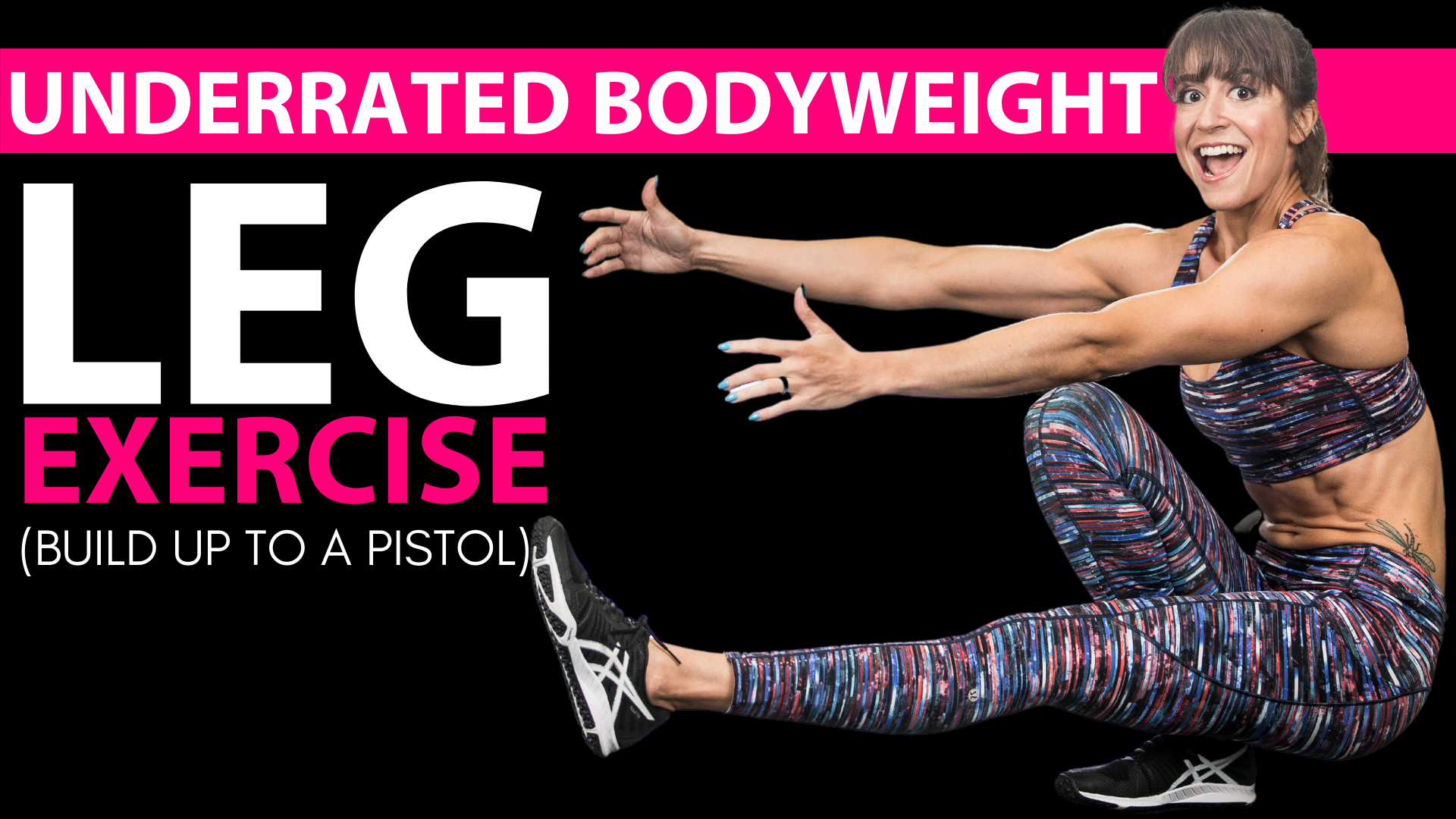Too often we only think about progressing movements to build muscle by adding loads.
However, you can build muscle by creating progression in other ways especially if you don’t have any tools at your disposal.
If it challenges you, it will change you.
So if you’re only training with bodyweight but want to strengthen your legs?
You’ll want to try this amazing move, and one of my favorite bodyweight leg exercises we often aren’t doing – The Airborne Lunge!
Before I go over how to do this move, I want to highlight other ways you can create progression without loads all of which can be done with this great lunge variation.
One, you can use unilateral movements over bilateral moves.
Two, you can create more instability, through changing the surface you’re performing the move on or even the base of support you have, such as doing a fully single leg movement.
Three, you can change up tempo. You can slow down the whole movement, parts of the movement or even speed the move up and make it more explosive. You can even slow down one part and speed up another. Or you can even add a pause or hold.
Four, you change up the range of motion you’re working through. Increasing the range of motion of a move can make it more challenging. It is also a great way to make sure you’re working to maintain the mobility you build through your other prehab work!
It’s key to remember we can find ways to progress movements and build strength and muscle even when we don’t have weights.
So if you’re training at home or when you travel and need to progress the basic bodyweight leg exercise, try this Airborne Lunge Variation.
It’s a great move if you even want to build up toward that pistol squat!
The Airborne Lunge:
The Airborne Lunge is a great bodyweight glute and leg exercise that can help you build up to that full pistol squat even with a more hip dominant movement pattern.
It is however a deceptively hard move.
To do the Airborne Lunge, stand tall and shift your weight to one foot, bending the other knee to bring your heel up toward your butt. You want to keep that foot pulled toward your butt so you only touch your knee down when you lower.
Then sit your butt back to hinge at the hips as you bend your standing knee to drop your back knee down toward the ground. You will lean forward as you hinge, but do not round over. You are leaning forward to counterbalance your weight and sit back.
Touch your knee to the ground gently without letting that raised foot touch down.
Do not reach that raised leg back too far or you will get too spread out. Your standing knee may travel over your toes. This is NOT a bad thing and this ankle mobility is required to build up toward the full pistol squat. Just make sure you’ve pushed your butt back to load your glutes while keeping that standing foot, and especially your heel, firmly pressed down into the ground.
Lightly touch your back knee down, then drive back up to standing. Do not push off that knee or the raised foot.
You want the entire movement to be powered by that standing leg.
Stand tall at the top and squeeze that standing glute. Try not to touch the other foot down.
Repeat the move again, sitting your butt back to hinge as you bend that standing knee to lower down.
The range of motion on this move and the instability of the unilateral movement make it a challenge. To progress it further, you can increase the ROM, by performing the lunge with your standing leg up on something so you have to sink deeper.
Or you can change up the tempo, slowing things down, even pausing at the bottom.
However, you can also modify this movement by reducing the range of motion and touching your knee down to a block or box. You can also reduce the instability by holding on to something to help you balance.
But this unilateral move is a great way to build strong legs and glutes, correct imbalance and progress your bodyweight training WITHOUT adding loads!
And it’s a great way to perform a more hip dominant exercise that can help you even build up toward that full pistol squat as well!
SUMMARY:
Just remember, if it challenges you it will change you. Muscle growth and strength increases come from forcing our muscles to adapt to a challenge!




Wow, I’m going to give this a try this afternoon
It really is a deceptively hard move. One more to add to my goals.
Would holding a weight in front be another effective modification?
I am doing the BW Density Training and enjoying the new challenges without weights. So different than Meta Muscle Builder which also hurt so good 🙂 and love the R/S/A/cooldown of it like with 20min Max Out. Thanks Cori – your programs are the best!
Have fun!
If you press the weight out and away it would assist vs. holding it in close would make it harder. So glad you’re enjoying the different options and staying on that prehab!! Thanks Maria!